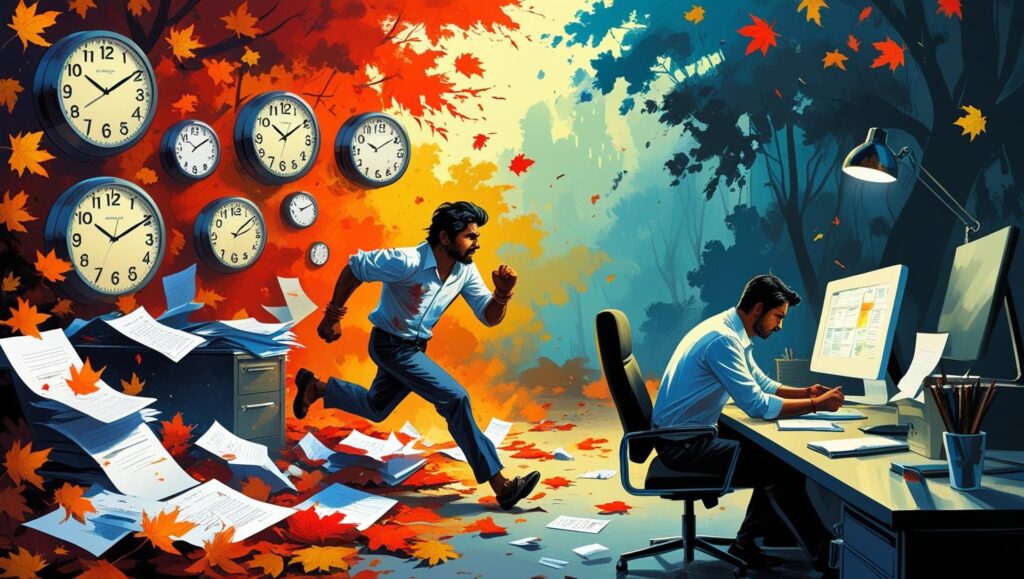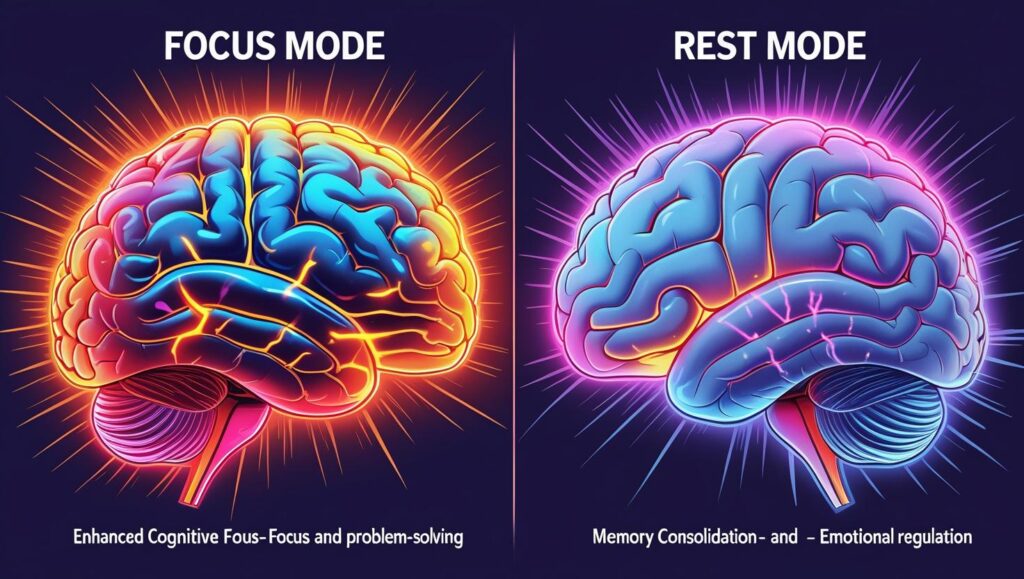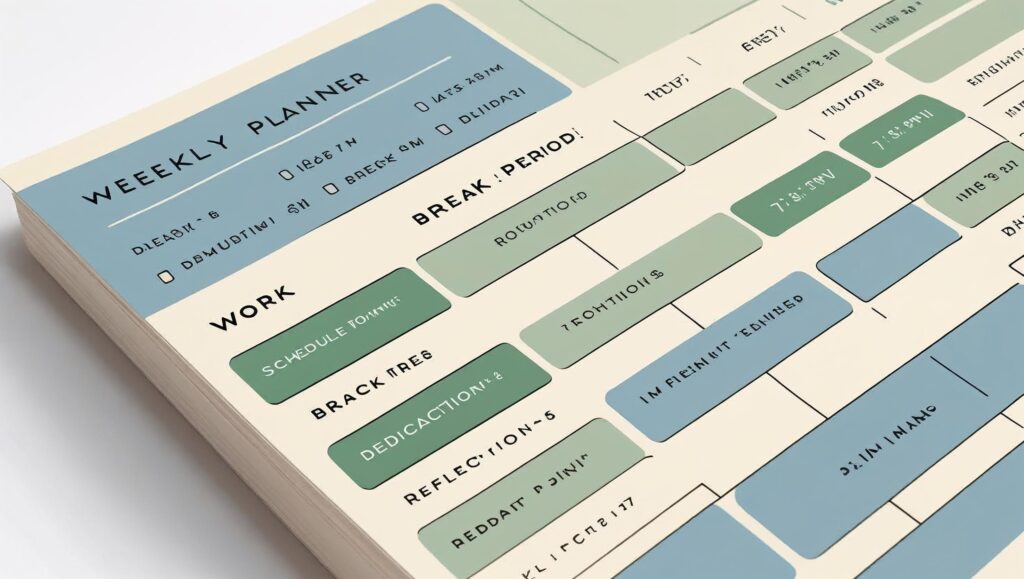The world is running faster than ever, but here’s the catch—speed doesn’t always mean progress. In 2025, more people are embracing a slower, more intentional approach to work and life. It’s called slow productivity, and it’s not about laziness—it’s about working smarter, not harder.
In this blog, we’ll explore why slowing down boosts your results, how it improves your well-being, and how to make slow productivity your new superpower.
1. What Is Slow Productivity?
Slow productivity is the art of doing fewer things, better. It’s about shifting away from the always-on hustle culture to focus on what truly matters. This isn’t about doing less for the sake of it—it’s about deep focus, fewer distractions, and real results.
Cal Newport, the author of Deep Work, describes slow productivity as a movement that helps people avoid burnout while still producing meaningful work.
2. Why Fast Isn’t Always Better

In today’s world, speed is often seen as success. But when everything is rushed, mistakes happen, burnout follows, and the work suffers. Moving too fast can lead to shallow thinking, missed details, and poor decisions. Just because something is done quickly doesn’t mean it’s done well.
True productivity isn’t about finishing first—it’s about finishing strong.
By slowing down, you allow space for creativity, accuracy, and thoughtful choices. You avoid the “busy trap” and instead focus on doing what really matters.
3. The 2025 Workplace Has Changed
Post-pandemic shifts and digital burnout have forced companies to rethink how people work. More teams are:
- Embracing asynchronous communication
- Focusing on outcomes over hours
- Encouraging time off for mental clarity
In fact, companies like Basecamp and Buffer promote slower, more focused workflows, and have reported higher employee satisfaction as a result.
4. Benefits of Slow Productivity
Here’s what you gain when you choose slow productivity:
- Better Focus: You stop multitasking and give full attention to one task at a time.
- Less Burnout: Slowing down means your energy is conserved, not drained.
- Higher Quality Work: Deep focus leads to creative breakthroughs and better results.
- Work-Life Balance: You stop working late into the night or over weekends.
- Sustainable Success: You build systems that support consistent output, not burnout cycles.
5. Signs You Need to Slow Down
You might be stuck in hustle mode if:
- You feel busy but rarely feel accomplished.
- Your to-do list is always overflowing.
- You’re constantly checking your phone or email.
- You feel exhausted at the end of every workday.
Sound familiar? It might be time to reset with a slower strategy.
6. How to Practice Slow Productivity Daily
Here are simple ways to adopt slow productivity starting today:
a. Time Blocking:
Use your calendar to block out focus time, breaks, and shallow work separately.
b. Prioritize Deep Work:
Spend your best energy hours on meaningful tasks, not admin work.
c. Set Fewer Goals:
Instead of a long to-do list, focus on 1–3 big goals daily or weekly.
d. Say No More Often:
Every yes adds more tasks. Be selective with your commitments.
e. Reflect Weekly:
Every week, review what worked and what didn’t. Adjust accordingly.
7. Real Examples of Slow Productivity at Work
1. Jason Fried – Basecamp Co-Founder
Jason Fried and his team at Basecamp have long embraced the slow productivity model. At Basecamp, employees work only 4-day weeks during the summer, avoid endless meetings, and focus on deep work. They don’t glorify overworking—they prioritize clarity and long-term impact. Their culture shows how doing less, with focus, can still create wildly successful results.
2. Cal Newport – Author of “Deep Work”
Cal Newport, who coined the term “deep work,” structures his entire workweek to eliminate distractions and give priority to high-focus tasks. He doesn’t use social media, schedules everything—including thinking time—and blocks out deep work sessions on his calendar. This is slow productivity in action: deliberate, distraction-free focus over frantic multitasking.
3. Microsoft Japan – 4-Day Workweek Experiment
In 2019, Microsoft Japan ran a bold experiment: give employees Fridays off and reduce meeting times. The result? A whopping 40% increase in productivity. It proved that working less can actually mean getting more done—if the time is used intentionally.
4. Creators & Writers
Many top creators today are leaning into slow productivity. Writers like Anne Lamott and Ryan Holiday talk openly about taking time to think, walk, and reflect daily before writing. They protect their creative energy by avoiding overload and prioritizing quality output over volume.
5. Designers & Developers in Agile Environments
In some tech companies, developers and designers are now using “Focus Weeks”—a time with no meetings, no emails, no Slack pings—just deep problem-solving. This movement, adopted by teams at places like GitLab, honors slow productivity by creating deliberate space for thoughtful work.

These examples prove that slow productivity isn’t just an idea—it’s a growing global shift. From software to creative industries, smart companies and professionals are choosing quality over speed, depth over distraction, and sustainability over burnout.
8. Pair It with Digital Minimalism
Slow productivity works best when paired with digital minimalism—cutting out the digital noise. Reduce screen time, unsubscribe from unnecessary emails, and keep your workspace distraction-free.
If you’re looking to reduce distractions and regain focus in your daily workflow, check out our guide on Digital Minimalism: Clear the Noise, Do More Work to simplify your digital life and boost mental clarity.
9. The Science Behind Slowing Down
Modern neuroscience supports the idea that rest enhances performance. When we slow down, our brains activate the Default Mode Network (DMN)—responsible for creativity, memory, and deep thinking.
A study in Nature Reviews Neuroscience found that rest helps in processing past experiences and planning for the future. That’s why some of your best ideas come while showering or walking.
Taking time to do nothing isn’t a waste—it’s cognitive recovery.

10. Build Your Own Slow Productivity Routine
Here’s a basic routine you can customize:
Step 1: Time Audit – Track your time for 3 days
Step 2: Set Priorities – Apply the 80/20 rule
Step 3: Design a Daily Template – Schedule deep work + breaks
Step 4: Block Digital Clutter – Use apps like Freedom
Step 5: Plan Recovery – Breaks + reflection built-in
Step 6: Review Weekly – Reflect and reset every weekend
Even one or two changes can lead to noticeable shifts in energy and focus.

11. Mistakes to Avoid
- Confusing slow with lazy
- Skipping planning
- Not setting boundaries
- Trying to change everything at once
Keep it simple—slow down gradually and consistently.
12. Tools and Communities to Help
- Notion / Trello – Visual task planning
- Headspace / Insight Timer – Daily mindfulness
- Slack DND Mode – Set work-life boundaries
- Subreddits & Facebook Groups – Community support
🧠 Final Thought
In a world chasing speed, choosing to slow down is an act of courage. It means you no longer measure your worth by how much you hustle, how many tabs you have open, or how busy your calendar looks.
Slow productivity isn’t about doing nothing—it’s about doing the right things, at the right pace. It’s about creating space to think deeply, work meaningfully, and live more fully. You stop reacting and start choosing. You begin focusing not on how fast you can go, but how far you can sustain.
And here’s the best part: when you slow down, life feels less rushed. Work feels less stressful. And success? It becomes something you build steadily—not something you chase endlessly.
So if you’re feeling overwhelmed, burned out, or like you’re constantly behind, take a breath. Step back. Reevaluate.
Because in 2025 and beyond, real productivity isn’t about speed. It’s about clarity, presence, and intention.
🌱 Go slow. Grow steady. That’s the new hustle.
